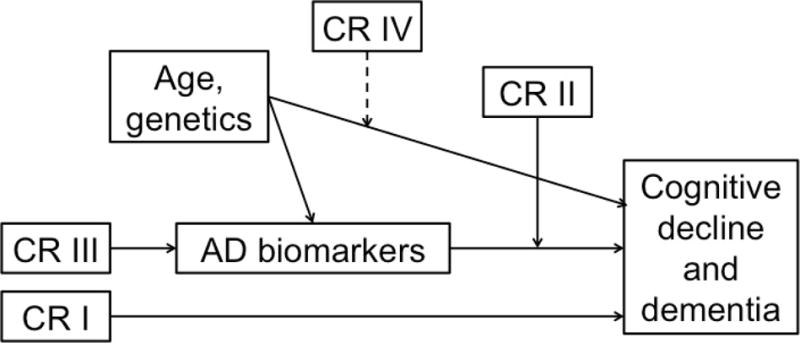Figure 1.

Illustration of four possible pathways by which cognitive reserve (CR) may influence rates of cognitive decline and risk of dementia in later life. Here, CR refers to proxy measures such as educational or occupational attainment, as well as their neural implementation(s), which are not well understood.
I) CR is linked to outcomes in a way that is unrelated to biomarker levels.
II) CR moderates the relationship between biomarkers and outcomes.
III) CR has a direct effect on biomarker levels (i.e., onset or rate of accumulation).
IV) CR modifies* the relationship between age/genetics and outcomes.
*dashed line indicates that although illustrated as a moderation effect, it could in fact be a mediation effect (or the relationship may depend on a specific demographic factor, gene, etc.)
